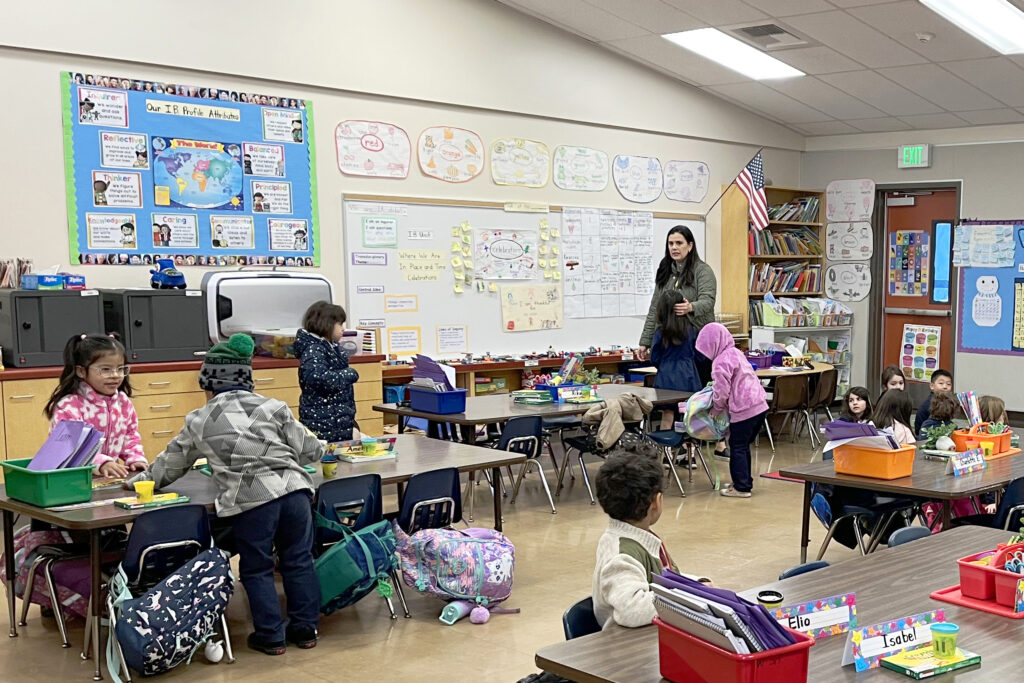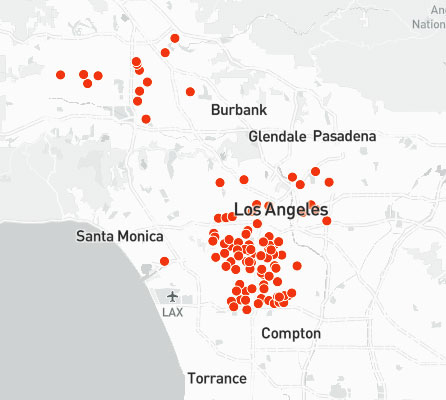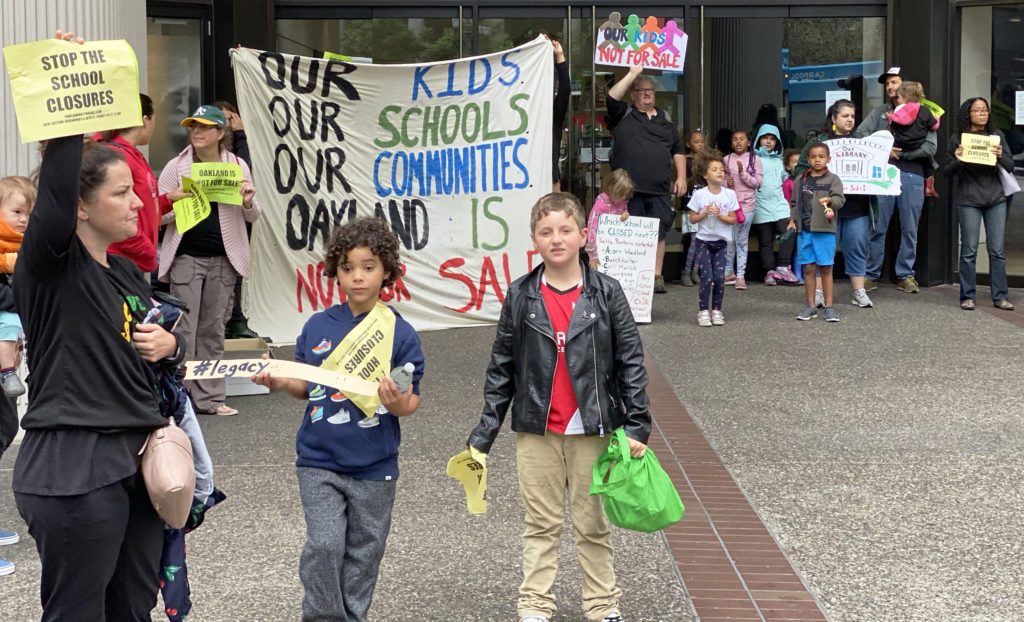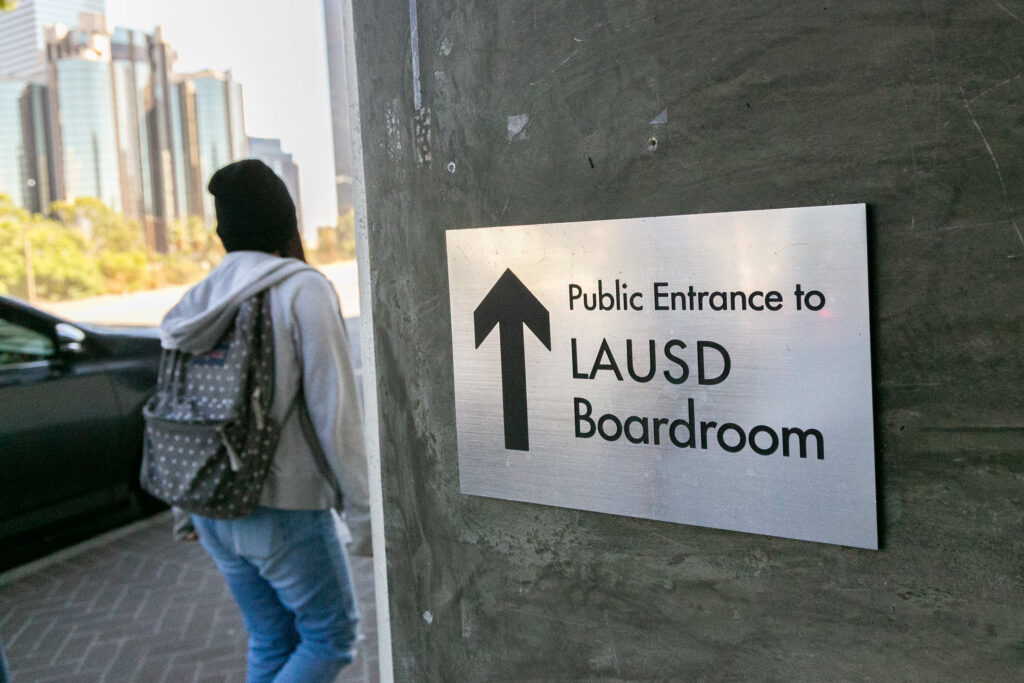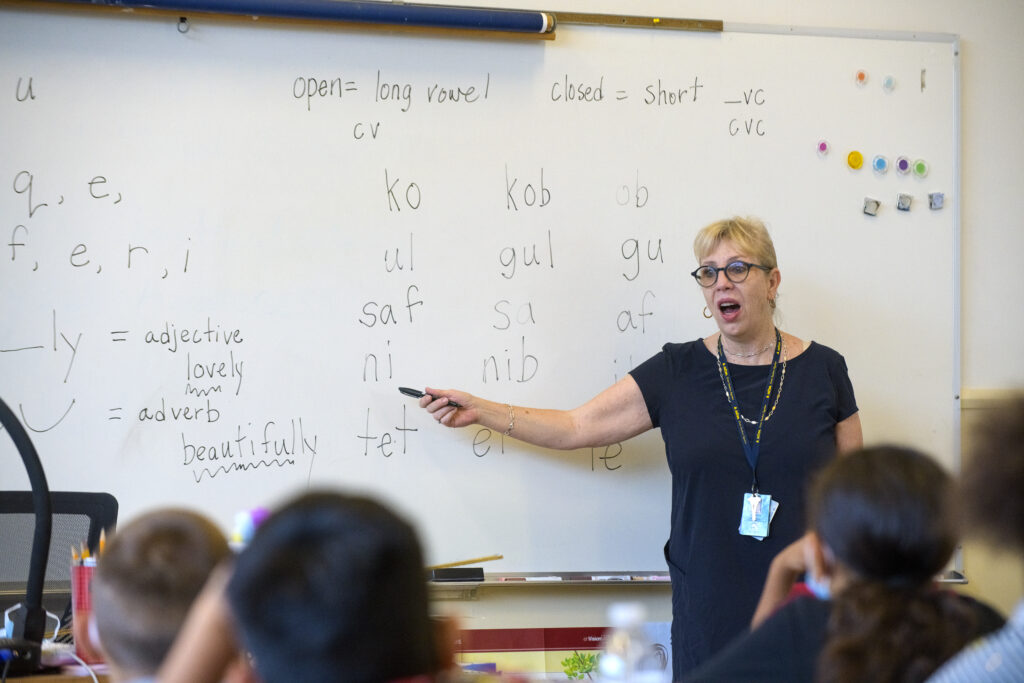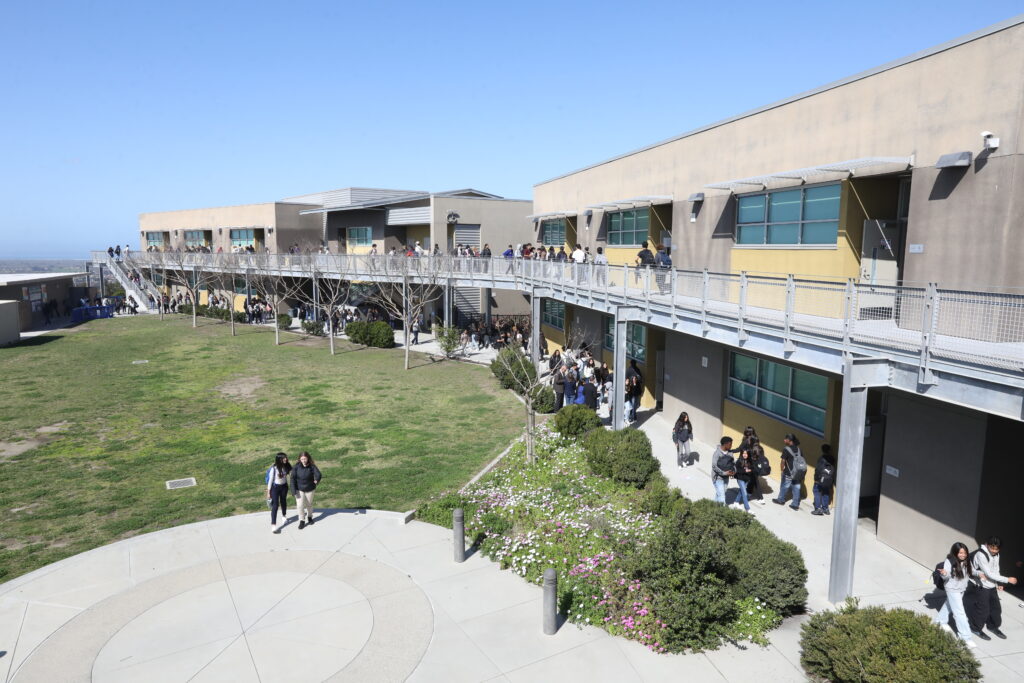
Pasadena Unified School District students return to school after the Eaton fire.
Credit: Mallika Seshadri / EdSource
Top Takeaways
- Every student has dealt with different circumstances and is in a unique place academically and emotionally.
- Hundreds of students have left LAUSD or Pasadena Unified due to the fires.
- Teachers have made the best of the circumstances and have been able to get students back on track academically.
Several weeks after students returned to Canyon Charter Elementary School following the Los Angeles fires in January, a second grade student at the school cried as his teacher packed up an absent friend’s belongings.
“What are you doing with this stuff?” the student asked, his grief ongoing, and mounting.
Katje Davis said it was difficult to explain that his friend was displaced by the Palisades fire and had to move to another school.
“This loss was hard,” Davis said. “But … we’re good teachers here. And we’ve figured out how to put the kids first.”
The second grader was one of hundreds who left the Los Angeles Unified School District, which lost two elementary schools to the fires, and the Pasadena Unified School District, which encompasses Altadena, and was the hardest hit.
And as the academic year comes to an end, teachers, administrators and experts have stressed that schools in areas affected by fires have remained a key source of stability, despite campuswide adjustments to a new normal and the ongoing grief expressed by students, many of whom lost their homes, pets and communities. Five months after the fires, students were back on track, making progress academically and emotionally.
“Schools provide a sense of continuity and safety for children,” said Pedro Noguera, the Emery Stoops and Joyce King Stoops Dean of USC’s Rossier School of Education. “And, that’s why it’s so important to be in school.”
‘Nothing like Covid’: Returning to normalcy
Despite losing some schools to the fire, Los Angeles Unified and Pasadena Unified were relatively quick to bring students back and resume classes at their new locations. Many students returned by the end of January.
The schools that burned down were relocated to new campuses, so students could stay with the same campus community, classroom, classmates and teachers.
Parents at Canyon Charter Elementary were concerned about environmental risks, according to Davis, and many kept their kids home until the district completed a Soil and Indoor Air Dust Report in late March.
In the months following the Eaton and Palisades fires, students who lived in impacted communities dealt with different circumstances and missed varying amounts of instruction. Some initially seemed happy to be back with their teacher and classmates; others struggled emotionally.
“This is nothing like Covid — because at Covid times, everybody was in the same boat,” Davis said. Her school was in a unique position — they were the closest to the burn zone but did not perish. They also didn’t have running water until mid-March.
Wendy Connor, a veteran first grade teacher at Marquez Charter Elementary School, which did burn down in Palisades, said the initial days and weeks after they resumed in January at Nora Sterry Elementary were geared toward students’ emotional well-being.
Teachers started marking tardies in mid-February, she said, and she tried to cover only the essential parts of each lesson.
“We’re reading a story. We’re writing. We’re practicing spelling and writing sentences and things like that,” Connor said in an interview with EdSource in February. “But, we’re just not doing it for as long as we normally would. If there’s five questions for them to answer, maybe I’ll just have them do three.”
As the weeks rolled on and students started to settle into their new environments, Connor said she felt she had been able to steer her first graders back into a more normal school day.
By May, most of the kids at Marquez Charter Elementary had settled down and were happy at their new location, Connor told EdSource.
“There’s been some stories of a few different students from different classrooms whose parents wanted them to go to a different school … and the kids just refused to go. They wanted to stay at Marquez.”
The efforts at Pasadena Unified have yielded some surprising results, according to Julianne Reynoso, Pasadena Unified’s assistant superintendent of student wellness and support services.
Although 10,000 of the district’s 14,000 students were evacuated from the Eaton fire, the district’s diagnostic assessments show that the number of students performing at or above grade level in math and reading across elementary and middle school has increased between the August/September and March/April assessment periods.
Specifically, the number of elementary students who performed at mid- or above-grade level rose 15 percentage points in math and 14 percentage points in reading.
Among middle schoolers, math scores rose by 11 percentage points and 6 percentage points in reading.
An LAUSD spokesperson said in an email to EdSource that they do not have any data measuring the impacts of the Palisades fire on students at Palisades Charter Elementary and Marquez Charter Elementary.
A changing landscape
In the final weeks of the spring semester, the school day looked similar to what it was before the fires, with one notable exception. Connor’s class is a lot smaller. Only 12 of her 20 students came back, and she made the most of the smaller class size.
“When you have 20, you have to run around to like six different kids that need your help. When it’s only 12, it’s like two kids,” Connor said. “And then we end up with extra time in the afternoon, and we’re starting to do some more coding activities … [and] other enrichment-type activities.”
At least 89 students left Los Angeles Unified due to the fires, according to a district spokesperson, while Pasadena Unified lost roughly 420 students.
“We did have families that left us,” Reynoso said. Other families maintained long-distance commutes to keep their kids in the same district school. “But what’s interesting about it is that they said, ‘We’ll be back. This is just temporary for us,’ I hope that’s true.”
But the fires, coupled with fears around immigration enforcement, also led to an uptick in the district’s rate of chronic absenteeism.
At the same time, Reynoso said Los Angeles Unified unexpectedly gained 263 students. She speculates that this could be the result of a California executive order allowing students who were affected by the fires to attend schools in other districts.
But every fire is different.
According to Noguera from USC, many communities in Santa Rosa and Paradise that suffered losses after fires returned and rebuilt. However, he cautioned that a large-scale return of families might be less likely in Los Angeles.
“Not everybody who was there will come back or can afford to come back,” he said. “It’s a process that’s going to take time, and we will only know, with time, how it all comes together.”
